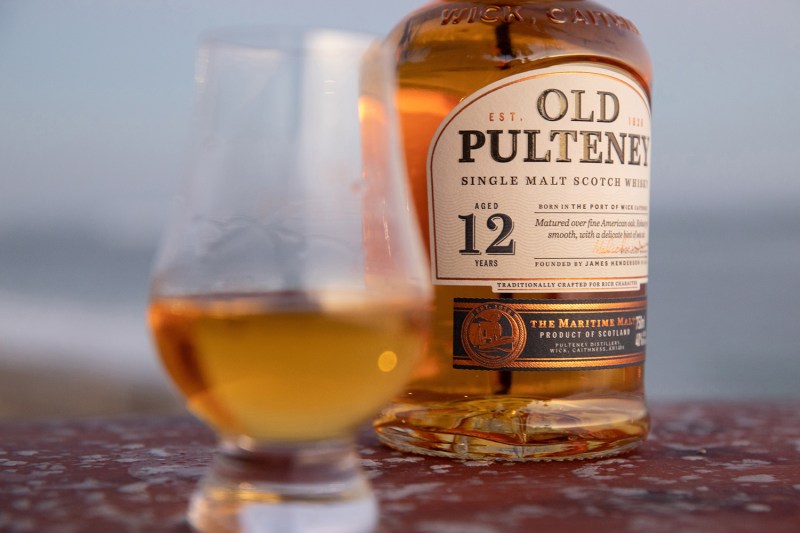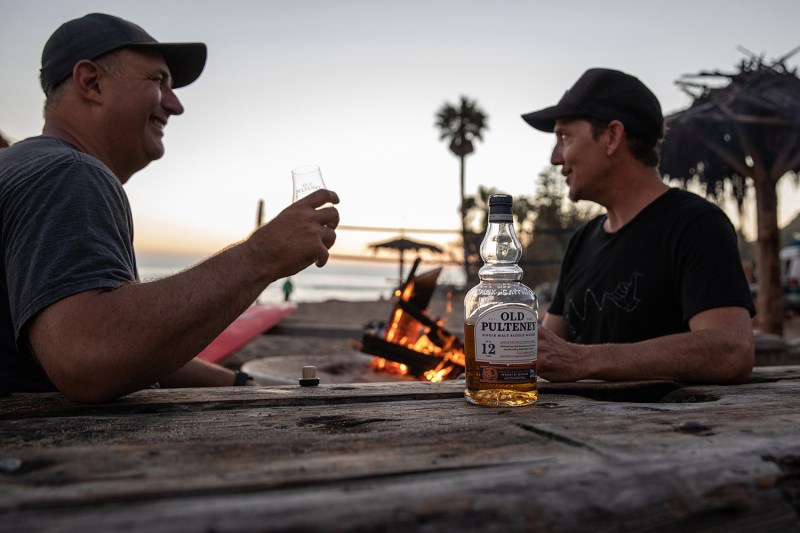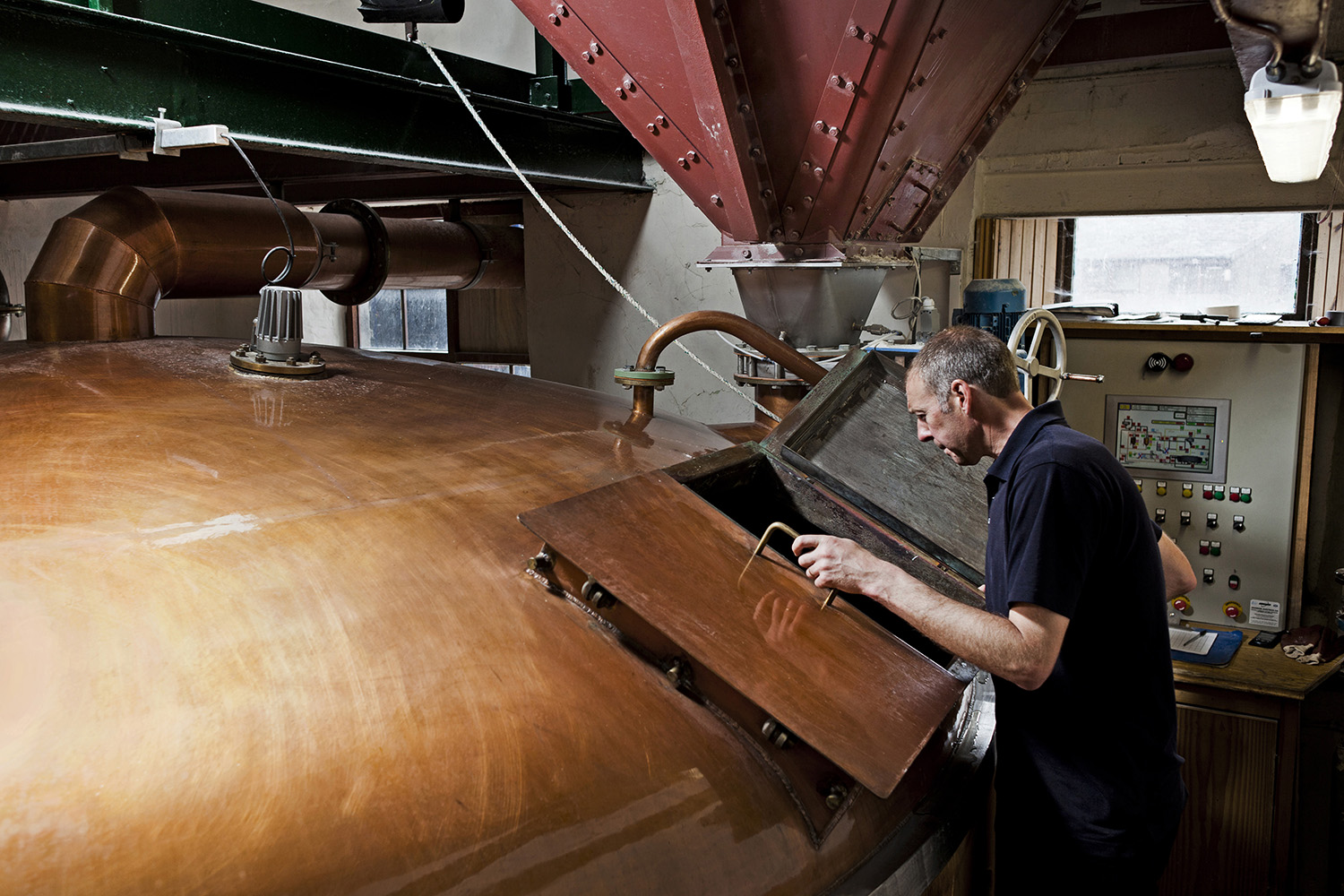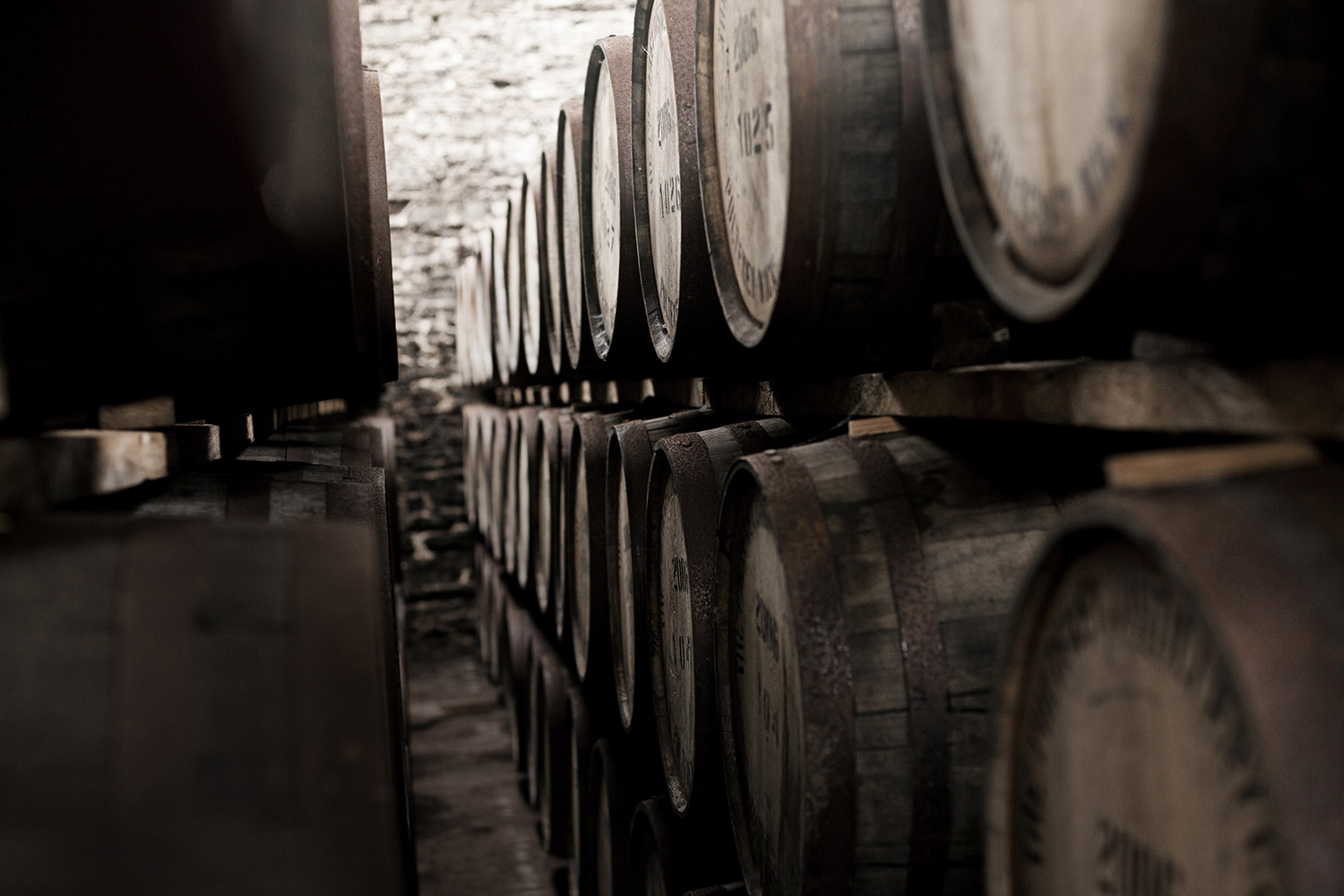
Old Pulteney is a Highlands single malt distillery on the Caithness coast that may not have as much name recognition as big players like The Macallan or Glenfiddich. But this smaller operation, nicknamed “the Maritime Malt” due to its close proximity to the ocean, does produce some very fine whiskies. The core lineup has just been relaunched in the U.S. with redesigned bottles and a few brand-new expressions joining the flagship 12-year-old: Old Pulteney 15, Old Pulteney 18, and the NAS Huddart. Distillery Manager Malcolm Waring recently described these four whiskies as highlighting various defining characteristics of the distillery: The 12 focuses on the influence of the sea, the 15 showcases the influence of warehouse maturation (as opposed to wood), the 18 proves that the location in the warehouse where the whisky matures has an effect, and Huddart adds a touch of peat to the mix.
Whisky fans are likely familiar with Old Pulteney 12, the only whisky in the lineup that is chill-filtered. It is matured in 100% ex-bourbon barrels, mostly refill but some first fill as well. It’s a relatively light whisky with notes of fruit and a touch of brine. The 15-year-old is matured in second fill American oak in racked warehouses, then moved to first fill Spanish oak sherry butts in dunnage warehouses. This whisky has a soft sherry finish with notes of chocolate, cherry, and vanilla spice. The 18-year-old is matured in the same manner as the 15, but the Oloroso sherry butts are located in warehouse 6, which Waring describes as being notably damp with unique microflora that affects the whisky’s maturation process. There are notes of spicy oak and herbs here, with hints of the tropical fruits that come with higher age statements. Finally, there is Huddart, a NAS whisky named after the street on which the distillery was founded in Wick. The liquid was aged in second-fill ex-bourbon casks, then finished in casks that once held heavily peated whisky, giving it a subtle smokiness along with some honey and spice flavors.

In keeping with its maritime identity, Old Pulteney has partnered with Sustainable Surf, a California organization dedicated to protecting the oceans and encouraging minimal carbon footprints. One initiative that the nonprofit started is The ECOBOARD Project, an effort to introduce sustainability and the use of recycled materials into the surfboard production process. The campaign is called Rise With The Tide, and you can see some of what the distillery and Sustainable Surf are up to in this video. “The sea has presented incredible opportunities for so many in many different ways,” said Waring in a prepared statement. “Rise With The Tide is about sharing these stories, and to provide a platform for those using the sea’s power to do good, like Sustainable Surf.”
The new Old Pulteney whisky lineup is available now for the following SRPs: 12 ($45), 15 ($90), 18 ($139), and Huddart ($65).





